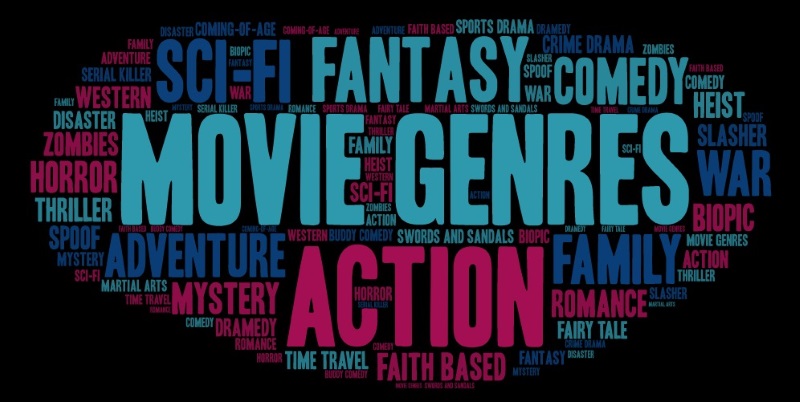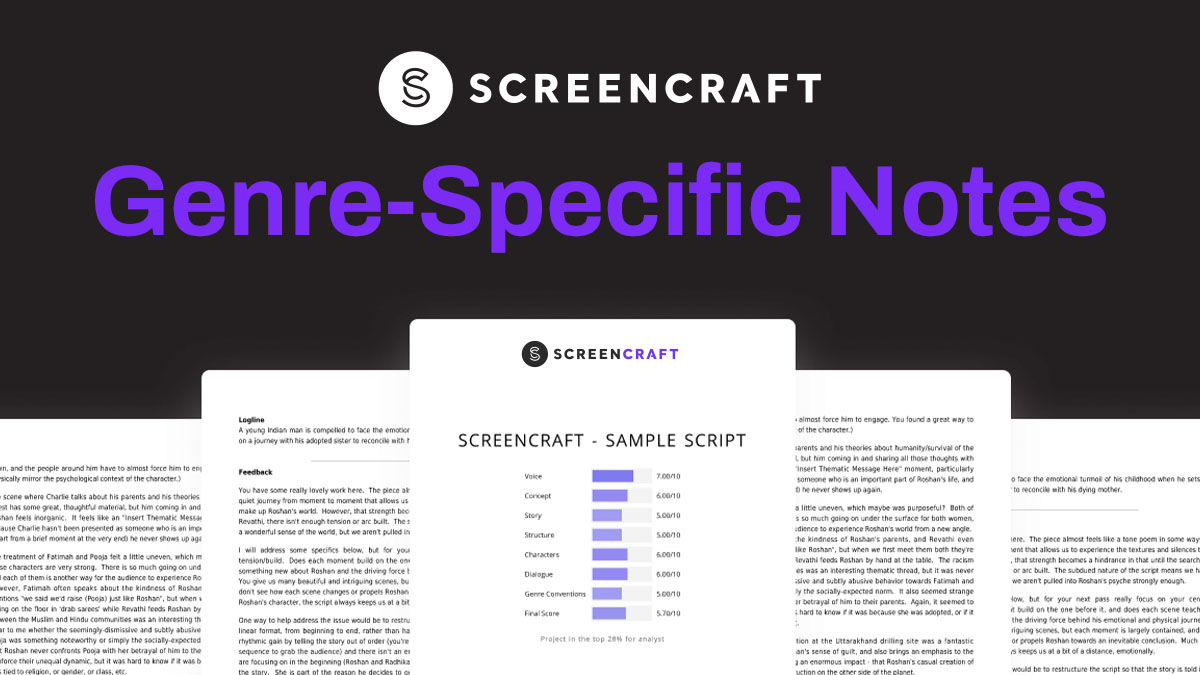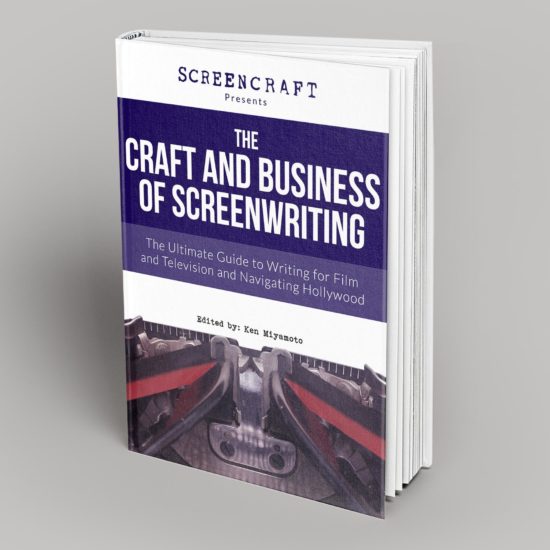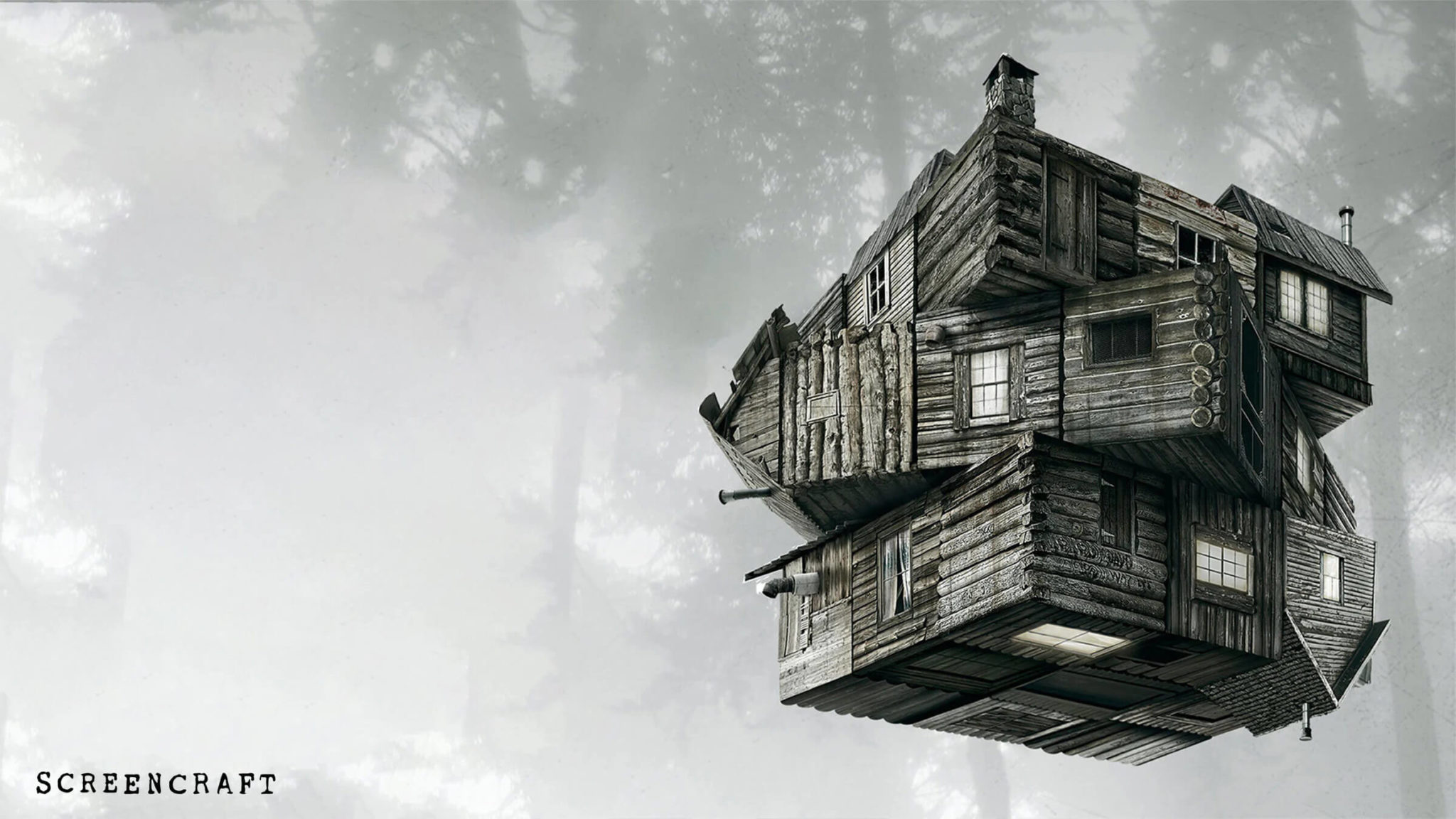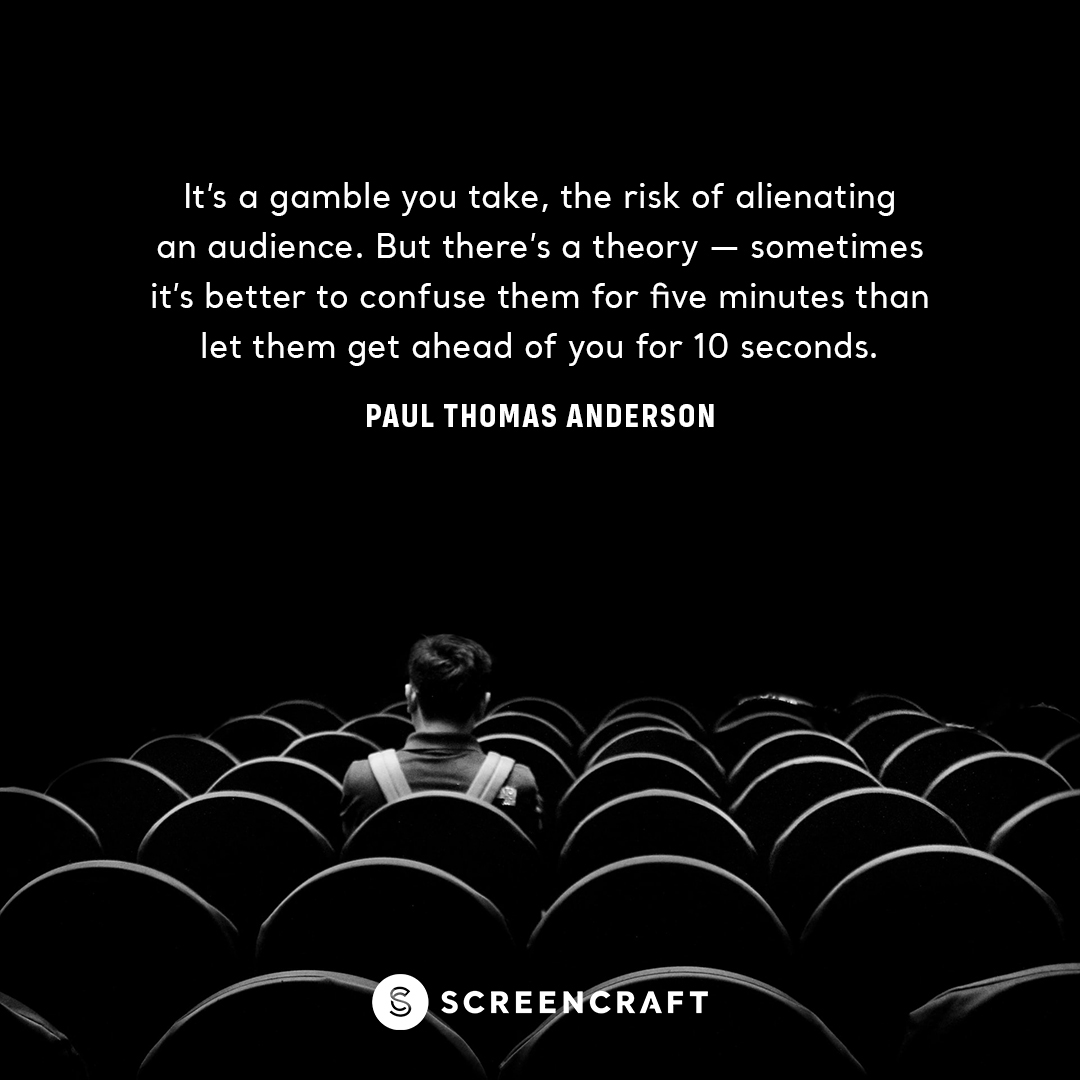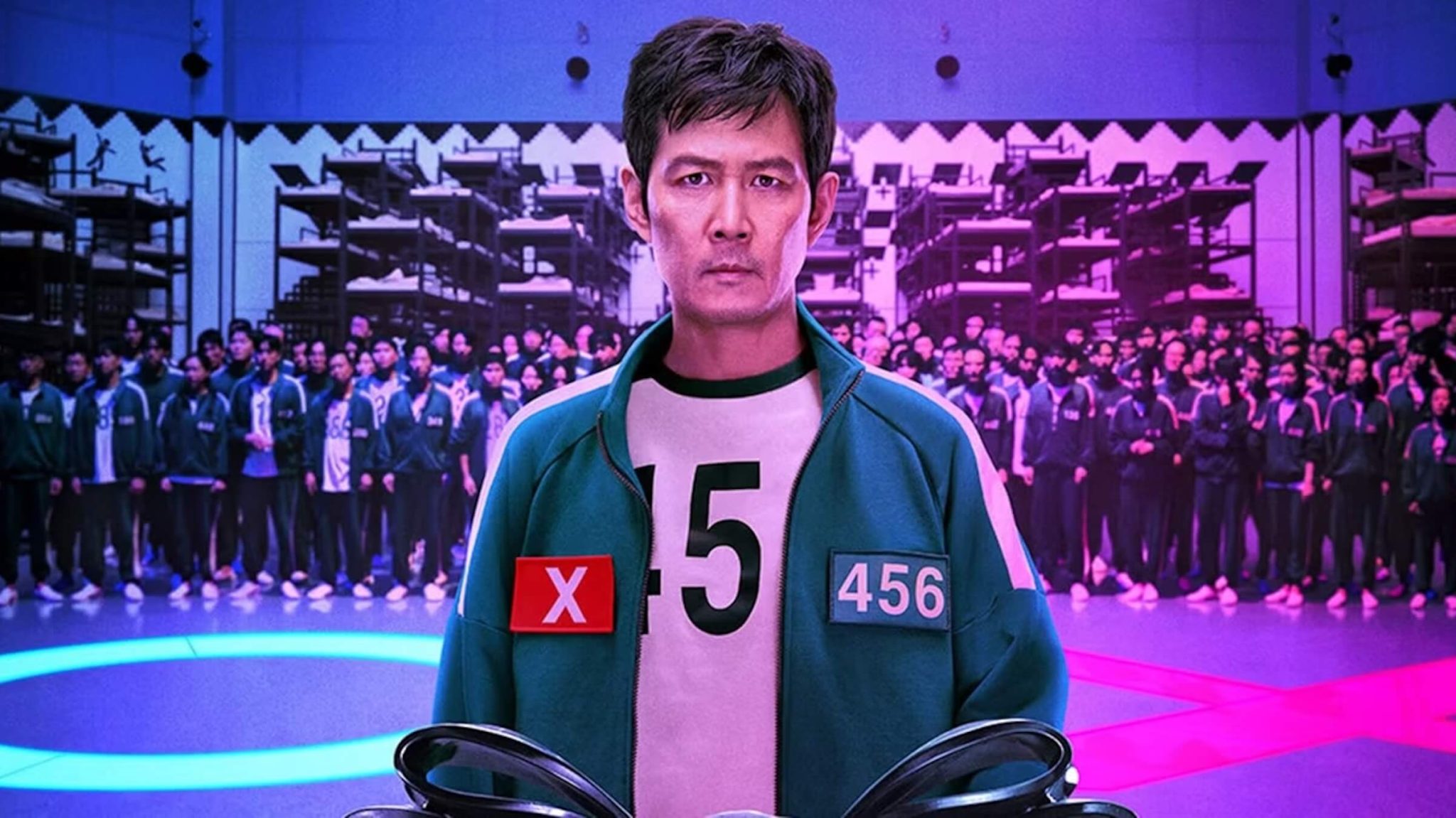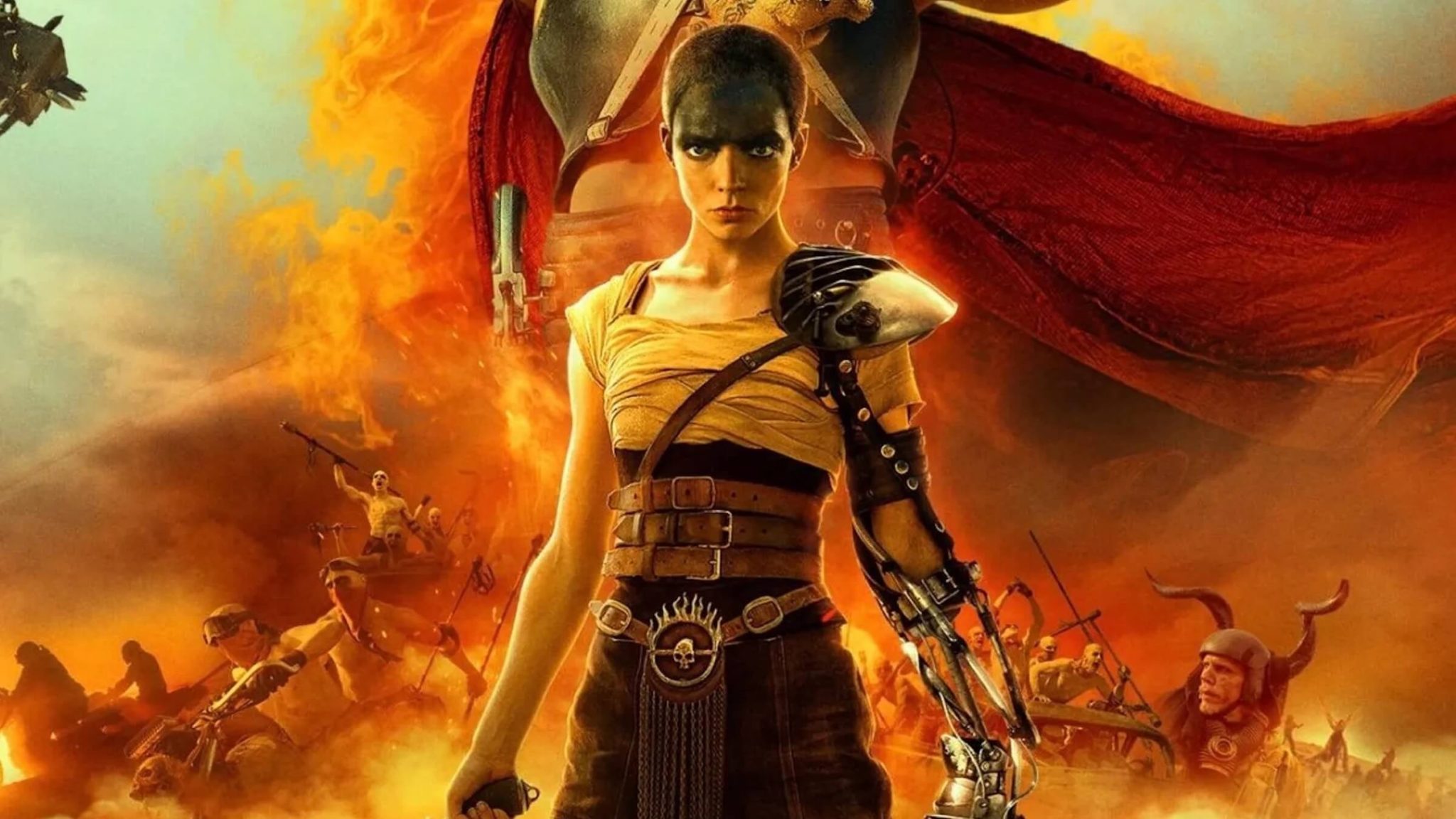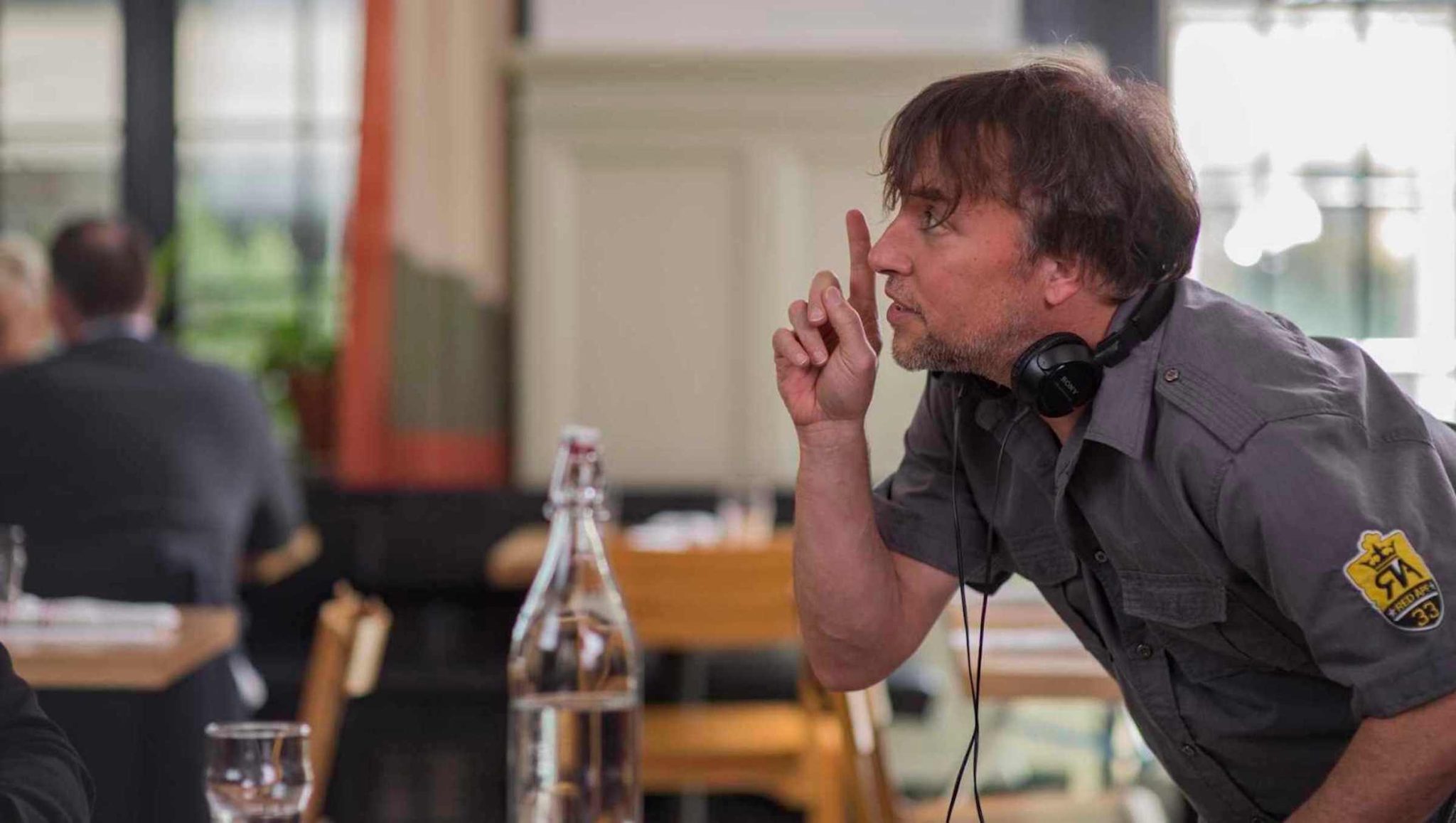Do you REALLY Know What Genre Your Screenplay Is?
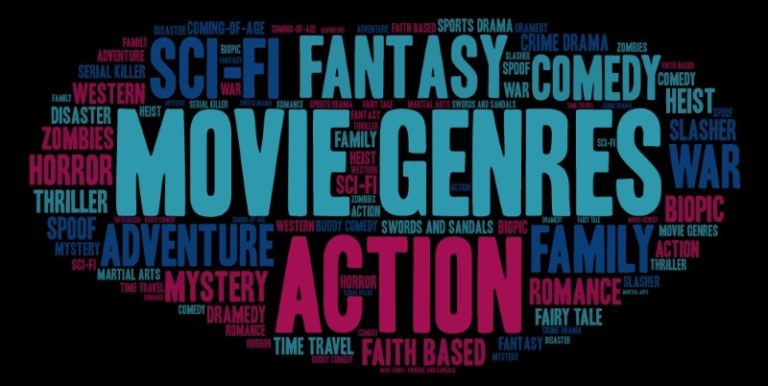
Knowing the genres and sub-genres of movies is a vital component to a screenwriter's knowledge-base.
From a conceptual standpoint — as you are seeding the ideas that you will eventually write — it's essential to be able to label the genre elements of any given concept so that you find a context of inspiration. Watching movies of similar genre, tone, and atmosphere helps to water that seed of a concept growing in your head. It helps to showcase what has already been done and what you can do to offer something different.
From a development standpoint — as you are developing the story and characters of whatever concept you have chosen to write — knowing the genre or sub-genre that you'll be writing in will help you cater to the various expectations of the audience that goes to see those types of films. This is not to say that you have to rewrite what has already been written (and produced). It's merely stating that you'll be writing for an audience that expects to laugh at comedies, scream in horror movies, cheer in action flicks, cry in dramas, etc. And when you get into sub-genres especially, certain additional elements drive such stories. Knowing the genre and sub-genre at this stage will help steer you in the right direction.
From a writing standpoint — as you write the script — you have the necessary context to deliver the goods for any genre or sub-genre. Beyond that, you'll be able to see ways that you can blend genres to make your concept more original so that it stands apart from otherwise copycat concepts within those genres and sub-genres.
From a marketing standpoint — as you market your script to studios, producers, and representation — knowing the genre and sub-genre is key to your eventual pitch that you'll either deliver in a brief and well-written query letter or in person if you get that first meeting. It is imperative that you know what genre or sub-genre your script falls under.
You can't walk into a Hollywood office and say, "It's a dramatic action/adventure comedy science fiction and fantasy story with elements of slasher horror flicks." The people you market your scripts to need to put them in a particular context to be able to ascertain if that genre and sub-genre is something they are looking to acquire and how they can sell it to the studios and executives to get that coveted green light.
In short, genres and sub-genres matter. They matter for the writer, the people the writer markets it to, and the audience that pays to see it in the theaters.
So to help, we've listed and defined some of the most common genres and sub-genres utilized in Hollywood today.
Action
The action genre is very broad with many sub-genres. Most action movies call for big action sequences, explosions, chases, gun fights, hand-to-hand combat, etc. Look no further than the 80s action heroes portrayed by Arnold Schwarzenegger and Sylvester Stallone for a perfect example. A more contemporary version would be the Fast and Furious franchise. All too often, the central plot of the script is less important compared to the high-octane action and thrills that such movies have to offer — in action movies, it's the concept and premise that truly shines. And while Mad Max: Fury Road is technically a sub-genre of science fiction mentioned below, it clearly qualifies as perhaps one of the greatest action movies of all time. It is 100% action.

Notable action sub-genres include:
Martial Arts Flicks — They often, but not always, have the essential action necessities listed above, but accompanied by a focus on one or many forms of fighting that the lead character utilizes. Any Bruce Lee, early Jean Claude Van Damme, early Steven Seagal, Chuck Norris, or Jackie Chan movies — among many, many others — are martial arts action flicks. Things go bang and boom, and many, many kicks and punches are thrown. The Raid movies would be the best contemporary examples.
Action Comedy — These types of movies blend action and humor. For such a film, you can't have too much action overshadowing the comedy, and you can't have the comedy overshadowing the action. It has to be as even a blend as possible. Bad Boys and the 21 Jump Street movies are perfect examples. They also encompass another action sub-genre below.
Die Hard on a... — The success of Die Hard immediately created a singular sub-genre using the namesake of the original inspiration. These are action movies that place a hero in a situation where they are confined to one location where they must fight off the bad guys. Speed was Die Hard on a Bus. Passenger 57 and Air Force One were Die Hard on a Plane. Under Siege was Die Hard on a Ship. Cliffhanger was Die Hard in the Mountains. It's a viable and successful sub-genre because of the simplicity of the concept.
Buddy Cop Flicks — We'll cover the Buddy Comedy below, but this sub-genre was a true driving force of the action genre. In the late 1980s and through the mid-1990s, movies like Lethal Weapon, Rush Hour, and Bad Boys dominated the box office. The buddy cop movie has mostly fizzled out, but now and then one pops up. It's a sub-genre ripe for revitalization.
Adventure
Adventure movies are the action genre's closest relative. They are seemingly one in the same beyond a single element — location. Adventure movies are best defined as action movies set within an exotic location. Something beyond an otherwise anonymous big city or small town. They entail a character traveling to a new world, or many worlds, to attain what they so desire. Indiana Jones movies globe trot to many different locations. The Pirates of the Caribbean franchise takes us to many worlds across the open waters of the ocean. The Goonies takes children into the underground caves of a pirate's treasure.

Notable adventure sub-genres include:
Disaster Flicks — The adventure aspect of these types of films entails characters struggling to survive through seemingly impossible and yes, disastrous, circumstances. The Poseidon Adventure, The Towering Inferno, San Andreas, almost every Roland Emmerich movie, etc. These are all disaster flicks that take us on the ultimate adventure of survival. They can often be blended genres set within the context of natural disasters, alien invasions, and post-apocalyptic situations.
Quests — The word quest is perhaps the most simple term to market. The mere mention of it entails a MacGuffin — a plot device in the form of some goal, desired object, or other motivators that the protagonist pursues — and the grand adventure of attaining it. Raiders of the Lost Ark and the Indiana Jones franchise as a whole is perhaps the most well known of this sub-genre.
Comedy
Comedies have plots that are often light-hearted and are written solely to make audiences laugh. They often exaggerate the situation, the language, action, relationships, and characters. This is perhaps the broadest major genre of them all. Comedies have to be funny. They have to focus on those laughs.

Notable comedy sub-genres include:
Fish-Out-of-Water — This sub-genre is perhaps most all-encompassing of the major comedy genre that it falls under because hi-jinks best ensue when an exaggerated character — or an everyday person — are placed into a completely different environment or situation than they are used to. Hence the name fish-out-of-water. Almost every great comedy stems from this very sub-genre to some degree — Dumb and Dumber, Bruce Almighty, Big, Beverly Hills Cop, etc.
Romantic Comedy — Equal parts romance and comedy. Guy meets the girl, guy gets the girl, guy loses the girl, guy gets the girl back. And during all of this, comedy ensues. This formula has drastically changed since the rom-com boom of the 1990s. These days, sometimes it's the girl as the focus. Sometimes the lead character doesn't get their desired love interest in the end. Whatever the situation is, it has to be funny or otherwise it's just a dumb ole love story.
Buddy Comedy — Two unlikely, or very likely, characters are stuck together in a situation as hi-jinks ensue as they struggle to overcome it. Dumb and Dumber, Ride Along, Step Brothers, Tommy Boy, and one of the greatest — Planes, Trains, and Automobiles. These types of films showcase the meaning of friendship (i.e., Buddy) while putting the characters in situations that test their patience with each other or with the given situations they are put under. And it leads to hilarity in the best of cases. This sub-genre is often blended with action in the likes of movies like Lethal Weapon, Rush Hour, 21 Jump Street, and Bad Boys — action comedies that also explore the friendship of two or more lead characters.
Parodies/Spoofs — This sub-genre spoofs other genres. Airplane spoofed the disaster flicks like Airport, etc. Scary Movie spoofed the Scream movies, as well as many other horror movies. The underrated National Lampoon's Loaded Weapon spoofed the Lethal Weapon franchise. Hot Shots spoofed Top Gun while its sequel spoofed Rambo. They point out the tropes of whatever movies they have their cross hairs set on and try to get as many laughs they can out of mocking them.
Crime
Crime and gangster films have been a staple Hollywood genre since the 1930s during the aftermath of the Prohibition Era. Many are based on or inspired by real-life gangsters. Movies like Scareface, Goodfellas, The Godfather Trilogy, The Departed, Bonnie and Clyde, The Untouchables, Donnie Brasco, American Gangster, and a seemingly endless list of hundreds upon hundreds of others have proved that the genre's popularity is strong and certainly isn't going anywhere.

The genre either focuses on the gangsters and criminals or tells a dual story about them and the men and women in law enforcement tasked to take them down.
But it's not just about gangsters. The genre can also focus on any type of criminal.
Notable crime sub-genres include:
Serial Killer Flicks — Whether it's through the eyes of a serial killer or through the eyes of those trying to stop them, the serial killer sub-genre has proven to be one of the most popular in the last thirty-some years of cinema. Movies like Se7en, Silence of the Lambs, and Zodiac represent a blended sub-genre that could be placed in the context of the crime, horror, or thriller genre, which is likely why such films have a history of popularity.
Heist Flicks — There is a certain allure of these types of movies. The lead characters are often portrayed as protagonists rather than antagonists. The audience roots for them despite the fact that a majority of the time they are breaking the law — and sometimes violently. Movies like Ocean's Eleven manage to allure audiences with the added trick of making the victim of the heist look as if they deserve what's coming to them. Michael Mann's Heat offered the duality of following both the detective and the thief, while somehow making audiences sympathize and root for both. This sub-genre taps into that fantasy most have of attaining riches so that we can go live the good life on some paradise island somewhere.
True Crime — This is a primary element of many crime movies, as mentioned above as such films feature the real-life gangsters and criminals of history. Beyond that, we see the sub-genre of true crime movies like The Wolf of Wall Street and Catch Me If You Can, which — beyond both starring Leonardo DiCaprio — feature the life of a real-life criminal that didn't necessarily harm anyone, but did all they could to steal as much money as possible to live the good life. Until, of course, it all comes crashing down. True crime can touch on any historical criminal figure, both known or unknown to the masses.
Drama
Dramas are focused on showcasing broad and emotional story and character arcs. They portray real-life situations, character types, and extreme scenarios, exploring the struggle of being human. This is perhaps the broadest genre next to comedy, with an endless array of outstanding examples, including Good Will Hunting, The Shawshank Redemption, The Pursuit of Happyness, Raging Bull, On the Waterfront, Rocky, etc.

Notable drama sub-genres:
Dramedies — This sub-genre is perhaps the most popular in these contemporary times. They showcase a perfect mixture of drama and comedy that attracts audiences that want some excellent character development and emotion but alleviated by some continual humor and laughs. Movies like Jerry Maguire, As Good As It Gets, Little Miss Sunshine, Silver Linings Playbook, The Big Chill, Forrest Gump, and many others have excelled at this to great success. They offer the writer a chance to explore the light and the dark side of humanity.
Coming-of-Age — All audiences can relate to coming of age in their life. It happens multiple times at many different ages, which offers writers the chance to explore perhaps the greatest of character arcs. This sub-genre often entails younger characters making the shift from child to teenager, teenager to youth-adult, or young adult to adult. Such movies tackle what every audience member has been through in one shape or form, which is what makes the sub-genre so popular. Stand by Me relates not just to those brought up in the 1950s, but to anyone that had a core group of friends leading into high school, which often disbanded as the call to different cliques pulled them apart by no fault of any of them. American Graffiti explores the notion of leaving home and figuring out what to do with your life. The Breakfast Club showcases the awakening of looking outside of your own cliques and finding out that everyone is the same without them.
Biopics — These are the movies that take a real-life figure and tell their story in the context of certain time periods in their life. Sometimes they are accurate to real life but more often than not, they are just an interpretation based off of their real lives. The best are a hybrid of the two. They can be historical figures like Lincoln or JFK, or they can focus on lesser-known figures like those found in A Beautiful Mind. Some of the most popular focus on pop culture figures like Bob Dylan, Johnny Cash, Miles Davis, Ray Charles, Facebook creator Mark Zuckerberg, etc. These movies succeed because they give a look inside the life of figures audiences only read about in magazines or see on television.
Sports Dramas — This sub-genre could arguably be a major genre of its own, as sports movies can often fall in line with comedy as well, as showcased in movies like Major League. However, many of them are dramedies or outright dramas set within the world of any given sport.
Sports dramas often focus on the allure of the sport they are covering. We see movies like The Natural, Rocky, Field of Dreams, Rudy, Hoosiers, Remember the Titans, and Friday Night Lights embrace the spirit of the sport. But as dramas, these movies also tap into the emotion and drama behind the athletes that play and the coaches that coach, as well as those around them.
Fantasy
The fantasy genre utilizes magic or other supernatural elements as a main plot element, theme, or setting. Many movies of this genre take place in imaginary worlds where magic and magical creatures are common. This genre is one that has had some success in Hollywood, but is often considered to be less than desirable for studios because of the budgetary concerns of creating new worlds. Look no further than the scope of Star Wars, Lord of the Rings, and Harry Potter as prime examples of franchises that take audiences to new and amazing worlds. Worlds that studios have to create at a great expense.

Notable fantasy sub-genres include:
Sword and Sorcery — Movies like Excalibur and The Lord of the Rings trilogy are perfect examples because they have both of those elements. Conan the Barbarian walks the fine line between this and swords and sandals of historical epics. However, the sorcery element pushes it into this category. Such movies entail sword play and magic wielded by warlocks, shaman, and wizards, among others.
Fairy Tales — The Princess Bride, Snow White and the Huntsman, Maleficent, The Wizard of Oz, Alice in Wonderland, Labyrinth, Legend, and Into the Woods are all either based on fairy tales of literature or are influenced and inspired by them. The wonderful aspect of writing a script based on fairy tales is that the source material is free of copyright and can be given an original spin of any writer's choosing for the most part. On top of that, the stories are popular lore that all would like to revisit from time to time.
Science Fantasy — This sub-genre focuses less on the science, and more on the fantasy, but still resembles science fiction as well. Star Wars is obviously the best example, while others include John Carter, Dune, and other lesser movies. The key to this sub-genre is the usage of fantasy elements like magic (the Force) and other mystical worlds.
Historical Epics
These types of movies often take on a historical event, a historic period, or a mythic, legendary, or heroic figure. Epics are big in scope. They have the biggest set pieces, biggest action sequences, biggest wardrobe budgets, and most grand musical scores. Picture movies like Titanic, Gladiator, Braveheart, Ben-Hur, etc.

Notable historical epic sub-genres include:
Biblical Epics — Movies like The Ten Commandments, Ben-Hur, The Passion of the Christ, The Greatest Story Ever Told, Noah, and many more focus on stories taken from the Christian Bible. Due to the fact that much of the population of the United States is Christian (in many ways, shapes, and forms), these movies often prove to be successful by telling stories that most grew up with. Even audiences that aren't religious enjoy the adventure and excitement found within.
Swords and Sandals Epics — Many times, these movies are mixed in with biblical epics, due to the time period. However, many focus not on biblical stories, but stories of myth and non-religious historical time periods — Gladiator, Troy, Spartacus, 300, Cleopatra, Clash of the Titans, Conan the Barbarian, etc. They have swords and often sandals, due to the time periods. They often focus on war and sometimes mythical power.
Horror
Horror movies have been popular since the dawn of cinema. They focus solely on tapping into our deepest and darkest fears and using that to make us cower, gasp, and scream in the theater. There is a scientific explanation for this genre that gives us the thrill of fear at its highest within the safety of reality. The key focus in a horror movie — if you're going to pitch it as that — is the scares. It has to be scary and it has to tap into the fears that many have. These types of movies accomplish such scares by focusing on tactics like the unknown, anticipation, visuals, being chased, the disfigured, phobias, scary location, and monsters — read 8 Ways Horror Movies Scare the S*** Out of Audiences for more on those subjects.

Notable horror sub-genres include:
Slasher Flicks — This sub-genre excelled in the late 70s, through the 80s, and into the early 90s, with the reigning slasher villains Freddy Krueger (A Nightmare on Elm Street), Jason Vorhees (Friday the 13th), and Michael Myers (Halloween). Such movies entailed teenagers — often sexually active — going up against unstoppable human monsters. The slasher flick was perhaps born with the original The Texas Chainsaw Massacre, which was loosely based on famous serial killer Ed Gein. Many imitations followed the slasher flick boom until it fizzled at the turn of the century. Remakes have tried to re-invigorate the sub-genre.
Vampire Flicks — In the mid-90s and early to mid-2000s, this sub-genre seemed to be unstoppable. Such films halted the slasher genre trend, introducing the allure of eternal but cursed life. Bram Stroker's Dracula and Interview with the Vampire lead the way as countless vampire movies poured into the cinemas until the YA franchise adaptations of the Twilight Saga likely saturated the sub-genre.
Zombie Flicks — Zombies were the new vampires in the mid-2000s, and the sub-genre continues to thrive. 28 Days Later, Dawn of the Dead remake, and I am Legend made the sub-genre thrive until The Walking Dead took over, leading the most recent charge on television, with movies like World War Z following suite. Even Arnold Schwarzenegger jumped into the mix with the indie Maggie. Beyond The Walking Dead, however, this trend is starting to show its age, much like vampire flicks before it.
Haunted House Flicks — Paranormal Activity re-ignited this always worthy sub-genre, leading to a revitalization that continues today with the likes of the Insidious and The Conjuring franchises, as well as many, many others. The concept is simple. A family living in a house that is haunted by ghosts, demons, and who knows what else. It is a sub-genre that taps into the fears of many because when the movie is done, and audiences go to their own homes... they remember.
Monster Flicks — Whether it is the classic Universal monsters or a great white shark named Jaws (well, technically Bruce), monster flicks are often a popular draw. Universal dominated the genre in the 30s, 40s, and 50s with their takes on Dracula, The Mummy, The Creature of the Black Lagoon, Frankenstein, and The Wolfman, among others. One could argue that slasher flicks are no different than monster flicks, but there's often something different with this sub-genre, which can just as easily transition towards the threat of a natural beast like Jaws, a dog (Cujo), etc.
Science Fiction
Science fiction movies are often misidentified. True movies of this genre are defined as movies that often involve speculations based on current or future science and technology. This would disqualify movies that are clearly fantasy — i.e. Star Wars — that don't focus on true science or technology, or the speculation of their future likeness.
The key element is that the script must speculate on the technology and ideals of current and future science. That is what separates Star Trek from Star Wars. Star Trek is focused on the speculation of future technology and ideals of science.
Science fiction movies can be significant and bold like 2001: A Space Odyssey or small, personal, and minimalist like Primer.

Notable science fiction sub-genres include:
Post-Apocalypse Flicks — This sub-genre grew popular in the wake of the original Mad Max and it's sequel Mad Max 2: The Road Warrior, leading to an endless barrage of 1980s rip-offs until the genre began to blend into action and adventure. Even before Mad Max, The Twilight Zone's Rod Serling offered one of the greatest in the guise of Planet of the Apes, although it's not revealed until the last moments of the movie. This sub-genre then proved to be one of the most popular types of movies that is still going strong today. They explore what life would be like in the aftermath of nuclear war, disease, and whatever else the writer conjures. I Am Legend, a blended genre movie (based on a story by Richard Matheson), took the horror elements of the zombie horror sub-genre and melded it with post-apoc settings and themes. Other notables would be standouts like 12 Monkeys, Waterworld, Snowpiercer, Escape from New York, etc.
Time Travel Flicks — Another favorite sub-genre that comes in all different shapes and sizes. The critical element to it is the exploration of the time travel concept. Smaller films like Primer handle it differently than broader movies like those found in The Terminator and Terminator 2: Judgement Day. Then the sub-genre expands even more to comedy with the likes of the truly original Back to the Future franchise.
Thrillers
The thriller genre is popular within the walls of Hollywood development because such movies are often easy to afford and attract large audience at the same time. The key elements to any great thriller are anticipation and suspense. These movies keep audiences on the edge of their seats. The protagonist is presented with a problem and spends the whole film struggling to overcome it. It could be an escape, a mission, or a mystery. Regardless, the whole movie is full of constant twists and turns. No other genre character suffers like one found in a great thriller. Look no further than movie like Se7en, Psycho, Cape Fear, 10 Cloverfield Lane, and so many more.

Notable thriller sub-genres include:
Action, Science Fiction, and Horror Thrillers — We combine these because out of all of the major genres; this is the one that is most blended into other. Thrillers can take place in any genre or setting and with any character type.
Psychological Thrillers — The suspense in this sub-genre comes not from an outside threat, but often from the mind within the protagonist. In turn, they also mess with the mind of the audience as well. Movies like Memento, The Machinist, Enemy, Jacob's Ladder, The Game, Black Swan, Flatliners, and many more have protagonists that aren't quite sure if they're crazy or if there is a real threat, whatever it may be. This allows the audience to wonder the same as well.
Contained Thrillers — Arguably the most coveted type of script these days. Contained thrillers are those that take place in one or very few location. Studios and production companies love these films because the single location means that they will be easy to shoot. These movies can blend with action, science fiction, and horror genres easily. Prime examples are Phone Booth, Red Eye, Panic Room, Devil, Flight Plan, 127 Hours, Cube, Misery, and Rear Window to name a few. If you're looking to write a script that will turn heads, write a tight contained thriller in an original location.
War
This genre focuses on the horror and heartbreak of war where the actual battles take a backseat as the focus falls on the men fighting those battles, and the repercussions of what they've seen and experienced. Such films are often historical and are sometimes equally paired with other genres, including action, drama, and even comedy. But the critical component is obviously that it has to be set within the context of any given war. The most successful focus less on the battles and more on the men and women within the conflict.

Notable war sub-genres include:
WWII Movies — The most famous of all wars from a cinematic perspective. Some of the greatest movies overall come from this sub-genre, including Saving Private Ryan, The Thing Red Line, Schindler's List, The Great Escape, Patton, etc. These types of movies reflect a time long forgotten by many, yet highly revered. The greatest generation, they were called. And for good reason. Beyond that, this war was the last world war we've experienced, and it arguably changed the course of history more than any other war.
Vietnam Movies — Like movies based on the Middle East wars of the 1990s and current times, it took awhile for this war sub-genre to take hold and be embraced by audiences. Movies like The Deer Hunter lead the way in the latter part of the 1970s, when the war had ended. Many followed until Oliver Stone's Platoon showcased the true horrors of that war and gave the sub-genre respect that it had never had before, likely because it was produced a decade after the actual war ended — when it wasn't so close to home.
Westerns
The western genre, like the fantasy genre, is considered by many within the film industry to be an undesirable undertaking — albeit for slightly different reasons. Westerns were THE genre back in the 1930s, 1940s, and 1950s, eventually dying off somewhat in popularity at the end of the 1960s. While the genre still continued on with some acclaimed movies, it was never as popular with the mass audience as it once was. Thus, studios don't like to take what can be an expensive gamble. Westerns are set in another time period that looks very different from anything we see today. Sets have to be built. Wardrobe has to be created. Authenticity is key and sometimes that can cost a lot of money, which studios are reluctant to offer because of a questionable return on investment. These days, the only successful ones are those offered up by big names like Quentin Tarantino and The Coen Brothers.

Notable western sub-genres include:
Frontier Westerns — Movies like Dances with Wolves and Far and Away explored the notion of the final frontier of the United States of America — the west. This sub-genre focuses on the allure, the beauty, and also the danger of venturing into the frontier with hopes and dreams. They can be equally paired with adventure movies in that respect.
Gunslinger Westerns — These types of movies focus on the Old West mythos of gunslingers and cowboys. A sub-genre of this — and more of a nickname for a select few — are the spaghetti westerns that often starred Clint Eastwood (and directed by Italian director Sergio Leone... hence the "spaghetti") as a man-with-no-name gunslinger who saved towns and avenged the wronged. Eastwood's own Unforgiven, as well as standouts like Young Guns, Once Upon a Time in the West, The Magnificent Seven, and Shane best represent this sub-genre.
Knowing what genre you're writing in for any given project, and embracing what audiences love about that genre, is so important as a screenwriter. The genre, or blended genres, will sell your concept to you as a writer, to the powers that be in Hollywood, and to the eventual audience. The exciting aspect of genre screenwriting is finding those creative ways of working within the confines of those genres while telling new and original stories within them.
Here is a breakdown of the domestic box office take of the top genres and sub-genres, just to give you a perspective of the business side of genre screenwriting. They are broken down by genre, number of films, and the box office take from 1995-2016 (contemporary cinema).
In the end, find that hybrid of what you want to write, what Hollywood wants to buy, and what audiences pay to see.
1 Comedy 2,225 $41,747,223,429
2 Adventure 669 $41,719,533,261
3 Action 765 $34,217,021,891
4 Drama 4,197 $31,877,030,112
5 Thriller/Suspense 835 $16,433,502,171
6 Romantic Comedy 512 $9,302,749,566
7 Horror 449 $8,660,550,384
8 Musical 141 $2,073,416,716
9 Documentary 1,707 $1,949,324,754
10 Black Comedy 148 $1,224,891,285
11 Western 55 $866,969,174
Ken Miyamoto has worked in the film industry for nearly two decades, most notably as a studio liaison for Sony Studios and then as a script reader and story analyst for Sony Pictures.
He has many studio meetings under his belt as a produced screenwriter, meeting with the likes of Sony, Dreamworks, Universal, Disney, Warner Brothers, as well as many production and management companies. He has had a previous development deal with Lionsgate, as well as multiple writing assignments, including the produced miniseries Blackout, starring Anne Heche, Sean Patrick Flanery, Billy Zane, James Brolin, Haylie Duff, Brian Bloom, Eric La Salle, and Bruce Boxleitner. Follow Ken on Twitter @KenMovies
For all the latest ScreenCraft news and updates, follow us on Twitter and Facebook!
Tags
Get Our Screenwriting Newsletter!
Get weekly writing inspiration delivered to your inbox - including industry news, popular articles, and more!


